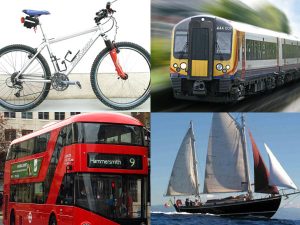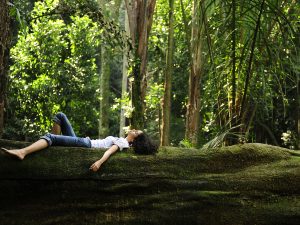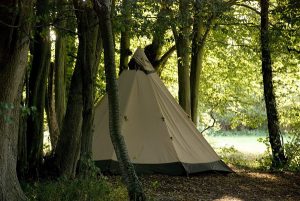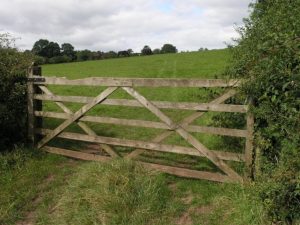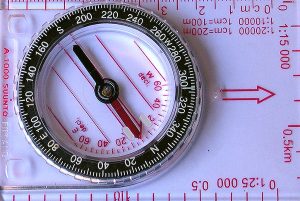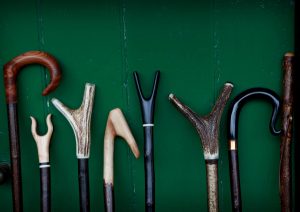Walking / hiking - introduction

“I have two doctors – my left leg and my right.” – G.M. Trevelyan
“Always hike in bear country with someone you can outrun” – anon
Contents
What is walking?
Walking is an enjoyable leisure activity that’s great for getting you moving and bringing you into contact with nature, with all its attendant benefits. It’s also the most natural form of transportation and one we’re perfectly designed to do (as opposed to sitting down all day). However, while a ramble in the country is one of our favourite free-time activities, the need to walk on a daily basis has been increasingly written out of today’s automated, convenient world, with serious consequences for public health, the environment and local communities.

Before motorised transport, walking was simply a necessity for ordinary people. Many footpaths still in use today follow ancient routes connecting towns and villages, often used to take goods or livestock to market. For centuries, unlanded commoners were also able to roam freely across large areas of the countryside to grow crops, graze animals or gather firewood. However, when the common land was enclosed (largely between 1700 and the mid-1800s) many of the footpaths were preserved, but people lost their rights of access to much of the rest of the countryside (and with it their means of eking out a living).

Part of the Kinder Scout trespass in 1932, which led to the establishment of public rights of way in the UK.
Walking as a leisure activity became popular in the 19th century, right around the time people were leaving the countryside en masse to look for work in the newly-industrialised cities. The Romantic Movement idealised the power and beauty of wild nature, and the concept of an idyllic country walk is enshrined in the literature of the time. A walk in the country was a way of escaping the pollution and stress of the inner city. Ironically though, access was then more restricted than at any other time in British history, something not everybody was happy about.

On April 24th, 1932, ramblers from Manchester and Sheffield participated in an organised trespass on Kinder Scout, a high moorland plateau in what is now the Peak District National Park. Violent clashes with gamekeepers charged with keeping them off the land resulted in a number of arrests, but subsequent, larger trespasses helped turn public opinion in their favour. The Ramblers Association was formed three years later, and in 1949, the National Parks and Access to the Countryside Act comprehensively mapped and safeguarded public rights of way, including footpaths, bridleways, and carriageways, and in 2000 the Countryside and Rights of Way Act finally restored to the public the ‘right to roam’ on all land classified as ‘mountain, moor, heath, or down’.

A good pair of hiking boots are essential for walking in the countryside.
Today, hundreds of thousands of miles of footpaths criss-cross Britain, many crossing private land, often spanning long distances (like the Pennine Way or the soon-to-be-completed Coastal Path). Many take in historic sites or routes, like Hadrian’s Wall Path that runs from coast to coast across the north of England. Walking is Britain’s most popular outdoor activity, enjoyed by some 9.1 million adults in England alone (22% of the population). That’s more than swimming, cycling or going to the gym. Walking is also popular in the United States, where trails tend to cross national parks rather than private land, and in Europe (a network of short- and long-distance routes spans the continent; countryside access rights vary by country).
Living Streets produced this video to encourage kids to walk to school
However, while walking for pleasure is in robust health, in the urban environment and our daily lives it’s a very different story. UK charity Living Streets estimates that there has been a 30% decrease in the number of walking trips per person per year since 1995. Incredibly, the 2014 National Travel Survey revealed that over one in five people hadn’t walked for 20 minutes(!) at all within the last year. With sedentary lifestyles presenting one of the greatest risks to health in the developed world, it isn’t hard to see that it would be good if this decline were reversed.

What are the benefits of walking?
Physical and mental health
Physical inactivity accounts for one in six deaths in the UK and costs the National Health Service up to £10 billion a year. Young people are now seriously at risk from obesity and it’s estimated that only one fifth of 5-15 year olds are achieving the recommended levels of physical activity. Daily walking is an easy way for adults to hit the recommended target of 150 minutes of activity a week; for the elderly or those recovering from injury, it’s a great way to maintain or return to fitness, as it places very little strain on the body – unlike high-impact sports like running. Just 25 minutes walking a day can increase your life expectancy by an average of seven years and halve your chances of having a heart attack. Walking can also help prevent type 2 diabetes, stroke and certain cancers, and regular brisk walks are better for controlling your weight than hitting the gym. Twenty minutes on a flat, even surface helps burn around 100 calories (the same as 10 minutes swimming, 12 minutes football or 16 minutes aerobics).

That might work too.
Walking is also good for your mental health: a 2014 study showed that people who started walking or cycling to work instead of driving benefited from improved well-being and concentration, and suffered less from stress. Like any physical activity, walking helps fight depression through release of endorphins, which improve mood and sleep patterns, and reduce stress and anxiety. Feeling fitter and controlling your weight also makes you feel better about yourself. Walking in a group is a sociable activity and a great way to meet people and make friends (which always makes us happier), and hiking in the countryside allows us to spend beneficial time in relaxing green spaces and to connect with nature.

‘Walking buses’ can pick children up along the way, and all walk to school safely together.
Local communities and economies
Improving things for pedestrians has a positive impact on local economies. People tend to linger and spend more in town centres and high streets that are nice to walk around (of course, from a low-impact perspective, we’d urge you to patronise local businesses rather than multinationals that extract money from your local economy). Exploring your neighbourhood on foot makes you feel more at home there – more a part of things. You’re also more likely to stop and talk to your neighbours than if you whizz past them in a car. Making it easier for the elderly or other less able sections of society to get out and walk the streets can also reduce feelings of isolation, so organisations like Living Streets work to tackle problems such as pavement parking, uneven or cracked paving slabs, potholes etc. to make the streets safer for everyone.
What to pack for a day hike in the hills
Environment
Driving causes pollution, and damages nature to some extent. There’s no getting away from it, so walking instead of driving whenever possible is a good thing. Long-term exposure to air pollution, mostly from motor vehicles, is estimated to cause 29,000 premature deaths each year in the UK. If everyone swapped one car journey a week for walking, traffic levels would reduce by at least 10%. One in five cars of those on the road during rush hour is on the school run, so the Walk to School campaign encourages walking all or part of the way. Walking to school means healthier children, less pollution and less congestion (the Department of Health estimates each child walking to school is worth an estimated £768 in congestion savings). Walking in the countryside also strengthens our connection to nature and makes us more inclined to value and protect the places we love. Hiking makes you part of your surroundings, rather than just watching it flash past through a car window.

Walking to work helps reduce congestion and pollution, keeps you fit and saves you money.
What can I do?
Walking is completely free and requires no special preparation or equipment other than a comfortable pair of shoes. It’s an easy activity to fit into everyday life: you can increase the amount you walk by getting off the bus a stop or two earlier, or leaving the car at home for short journeys. All walking is beneficial for health, but brisk is best; you should be warm and a little out of breath, but not struggling. If your level of fitness is low, it’s best to start slowly and build up to longer distances. If you need encouragement, a pedometer is a good way to keep track of how active you are, and you can set daily goals to work towards. Or you could sign up initiatives like Walking for Health, or ‘Try20’ (minutes walking a day), or join a local walking group (there’s even a Ramblers chapter for inner London and the Thames path is the most walked in Britain). Urban walking is a very safe activity but there are factors that can make people feel less than comfortable on urban streets. Therefore, organisations like Living Streets campaign on issues like zebra crossings, 20 mph zones, pedestrian areas, pavement parking and drink driving to improve safety.

If you’re hiking in the countryside, a good map or route description is essential, as is appropriate clothing such as decent walking boots and rain-gear. A compass can also be useful. You can pick up everything you need at a good outdoors shop or online. There are hundreds of routes and guidebooks available free or for sale online, and Ramblers Routes offers an online library of Britain’s best walks. Again, hiking is generally a safe activity but a little common sense goes a long way: always make sure you have enough food and water and have checked the weather forecast and transport timetables. Make sure your group is always on the same path, and if you’re going off alone let someone know where you’re going and when you expect to be back. Obviously, walking only benefits the environment if you respect the spaces and species you encounter so keep dogs on leads when required to do so (usually around livestock), and take nothing but your rubbish home with you.
Specialist(s)
Thanks to Ellie Clewlow of the Ramblers and Kathryn Shaw of Living Streets for information.

